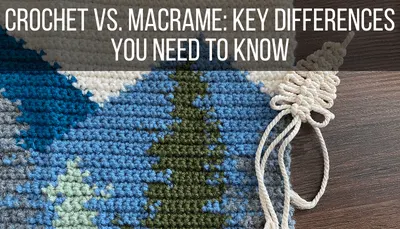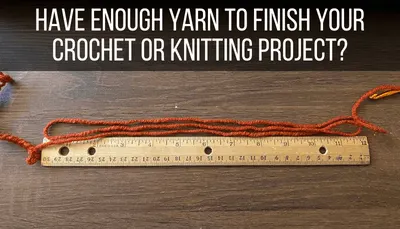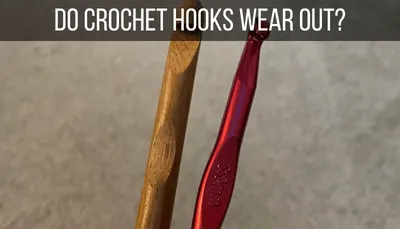Crochting for the first time can feel so slow and awkward. Each stitch feels burdensome and it’s easy to get discouraged, wondering how you’d ever be able to make enough stitches for an entire project.
Crocheting can be hard in the beginning, but it gets easier with practice. It takes time and practice to develop the fine motor coordination and muscle memory necessary for crocheting to feel more effortless and easy, which make it important to take on crochet projects that are appropriate for one’s skill level.
If you’re thinking about learning how to crochet, or have recently started to crochet, it can be a challenge. Yes, crocheting is hard, especially in the beginning.
That’s completely normal.
It’s not hard forever though. Having learned how to crochet myself, I can personally vouch for the fact that time and practice make it easier. The more you crochet and get used to it, the easier it will feel.
Let’s talk about why crocheting is so hard in the beginning and why it gets easier overtime.
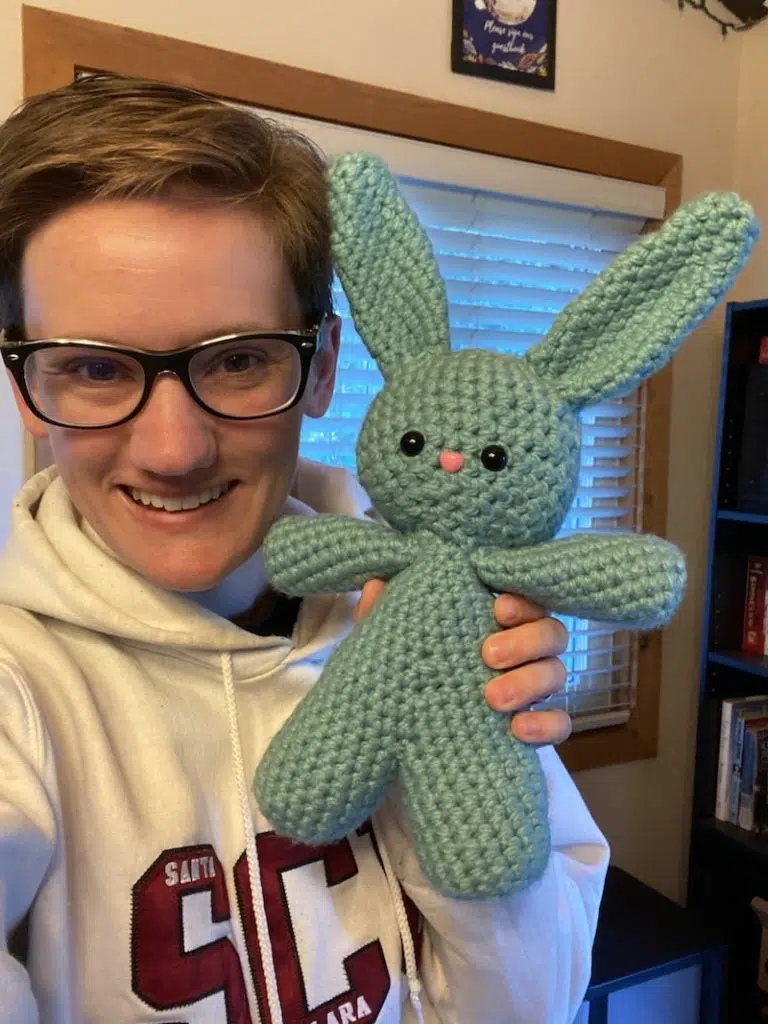
1. It Takes Time to Build Fine Motor Coordination
Crocheting requires fine motor coordination that may be new and unfamiliar. In order to crochet, you need to be able to manipulate a hook with your dominant hand, while manipulating yarn in your non-dominant hand, all while controlling the project underneath it.
To successfully create crochet stitches, you need to be able to do a number of subtle hand and finger movements in succession.
If you’re new to crocheting, these are movements you’ve probably never done before. Let’s run through the steps of a single crochet stitch to give you a better idea of what’s required.
The single crochet stitch is the most basic crochet stitch that you’ll need to learn first when beginning to crochet. There are other types of crochet stitches, but the single crochet is the basic, foundation stitch.
Here’s the setup, with the hook in your dominant hand and the yarn wrapped around a finger of your non-dominant hand. Some people prefer to use yarn guide rings to help them do this.
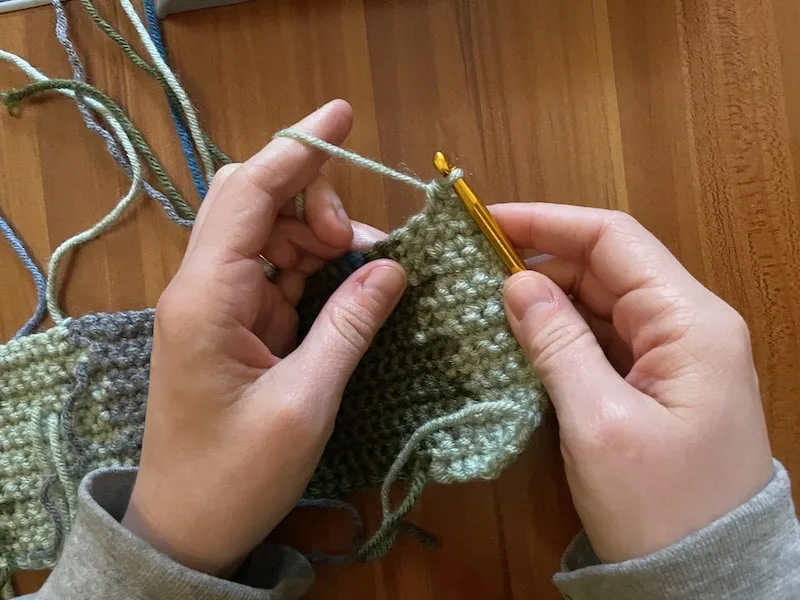
Now, here are the steps you’ll want to take to complete a single crochet stitch:
1. Put the hook underneath the legs of the next stitch in line.
As you probably noticed, this means you need to have existing stitches already in place. Starting a project and creating that first row of stitches is a whole other topic and something you only need to do once per project.
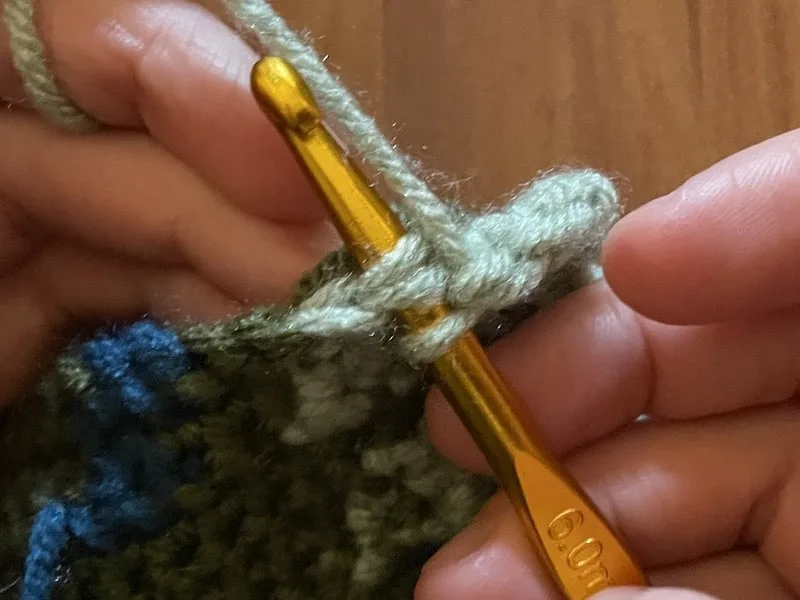
You’re going to use your dominant hand to put your hook under the “legs” of your next stitch. This is the section of your stitch that looks like a “V.”
2. Yarn over your hook
Using your non-dominant hand, hold your yarn steady. With your dominant hand holding your hook, twist your hook backwards and catch your yarn in your hook.
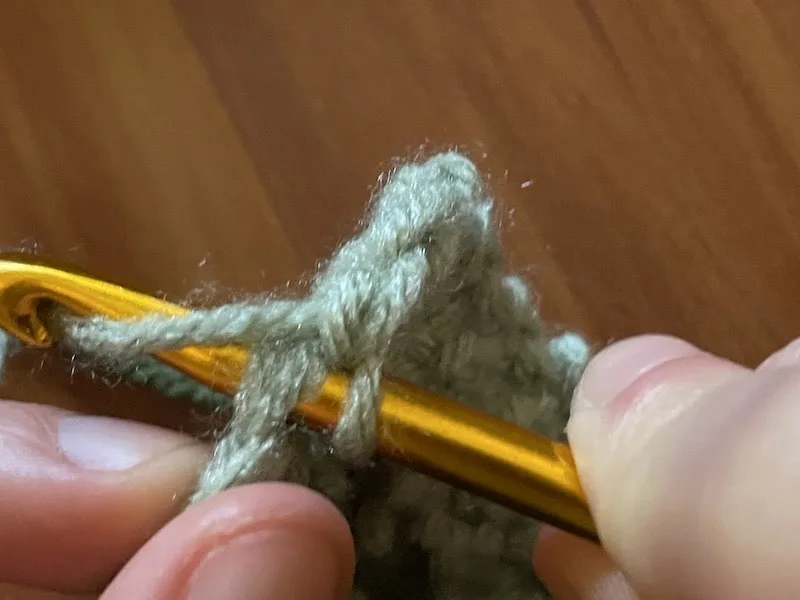
3. Pull your hook through your stitch
Using your dominant hand, pull your hook back through the legs of your stitch.
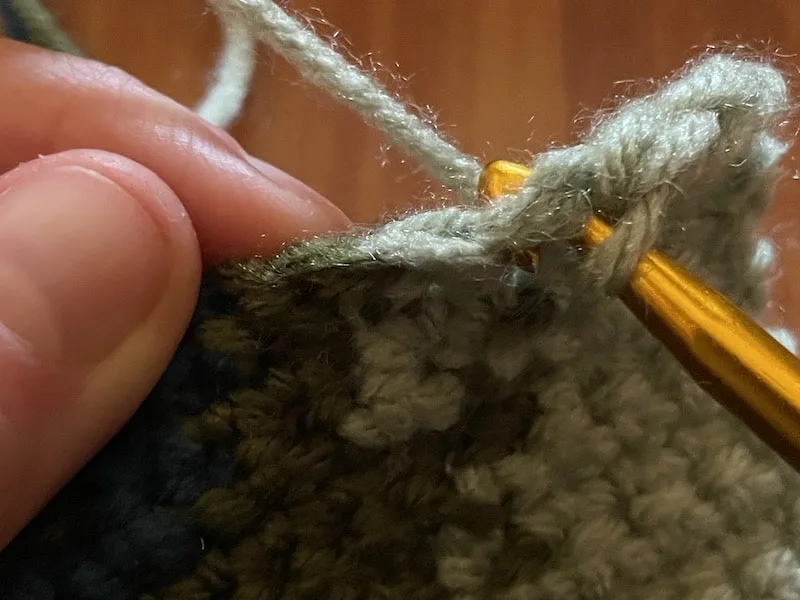
4. Wrap your yarn around your hook again and pull through both loops
Using your non-dominant hand, wrap your yarn around your hook again. Pull your yarn through both loops.
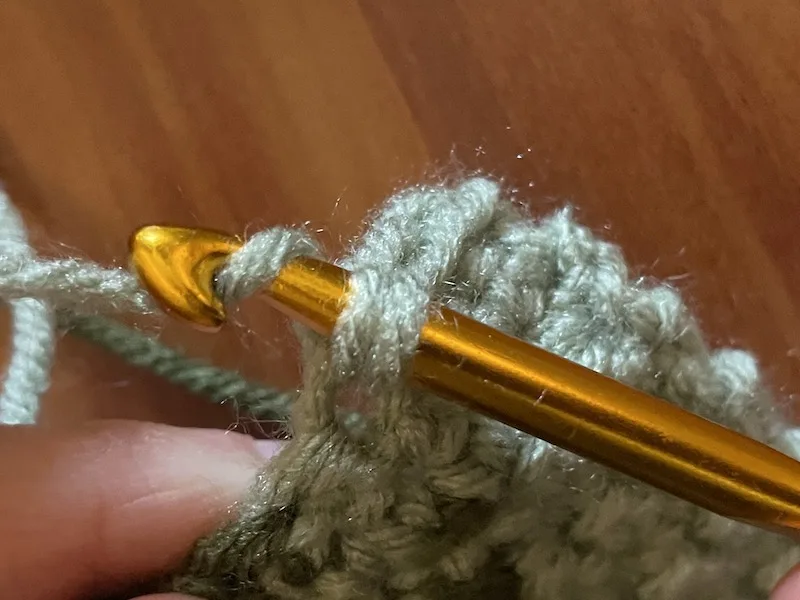
Now you’ve created a single crochet stitch!
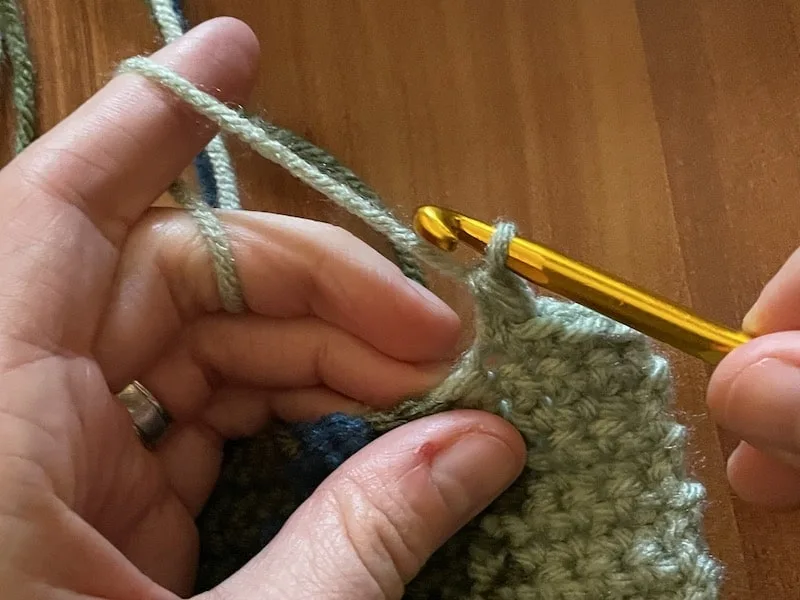
Here’s a YouTube video if you want to see the single crochet stitch in action.
If you’ve done other types of art like embroidery or knitting, it might be a quicker process to get used to the movements required for crocheting.
If you’re brand new to art forms like this, it may take a longer time before it starts to feel natural.
It depends! Regardless of your experience in other areas, the unique fine motor movements required for crochet will take some time to get used to.
It will take time and patience for you to develop the fine motor coordination needed to make seamless and easy crochet stitches.
2. Muscle Memory Will Eventually Kick In
Once you’ve become more familiar with the movements needed to make a crochet stitch, the repetitive process of creating crochet stitches will eventually help you develop muscle memory for crocheting, which will make crocheting easier.
Merriam Webster defines muscle memory as “the ability to repeat a specific muscular movement with improved efficiency and accuracy that is acquired through practice and repetition” (source).
This applies so well to crocheting. When you crochet, you make the same types of stitches over and over again.
Eventually, the process becomes more efficient and accurate.
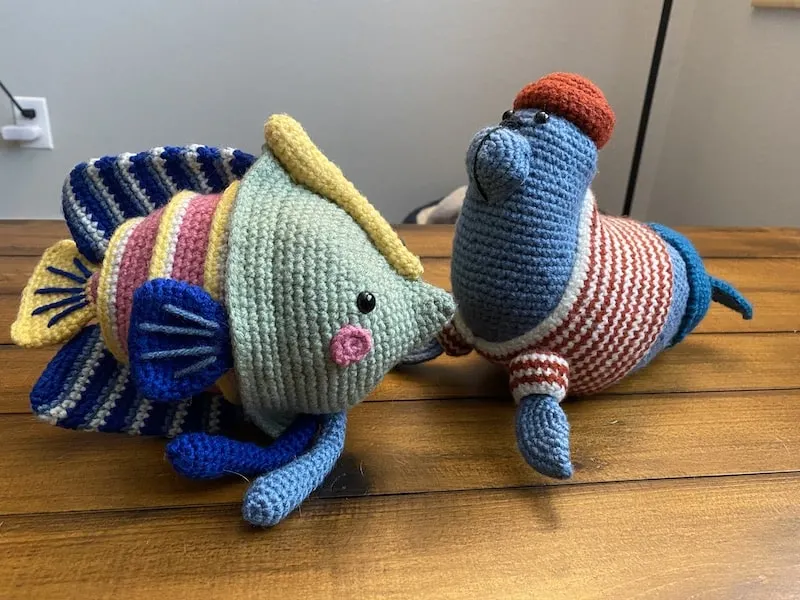
In my experience, when I started to develop muscle memory for crocheting, I was able to create more stitches more quickly with fewer mistakes. I also was able to watch TV, listen to podcasts, or talk to my family while crocheting.
This is a complete 180 from the painstaking work to create each crochet stitch when I was first learning to crochet.
Crocheting is hard in the beginning because you haven’t developed the fine motor coordination or the muscle memory needed to create easy and seamless stitches. Both of these things take time and practice.
3. Choose Projects Based on Your Skill Level
Crocheting can be hard when beginning crocheters take on projects that are far above their skill levels. This can cause beginning crocheters to skim over foundational crochet skills they need to effectively learn more advanced skills in the future. This can be overwhelming and stunt learning.
It’s really tempting to see flashy and fun crochet projects and want to take them on ourselves. The whole point of learning crochet is to create projects we enjoy, right?
Not so fast.
When you’re first getting started with crochet, it’s REALLY important to take on projects that are appropriate for your skill level, even if they aren’t the most exciting projects you’ve ever seen.
Choose projects that help you build your foundational skills and aren’t so challenging that they overwhelm you. Getting a solid understanding of the foundational crochet skills will help you build your fine motor coordination and muscle memory faster.
These foundational skills will be essential when learning more challenging crochet skills down the line.
4. Crocheting Will Get Easier with Time and Practice
With time and practice, crocheting will get easier. As you build your fine motor coordination and muscle memory, crocheting will start to come more naturally and you’ll be able to take on more challenging projects.
As someone who thought that my own crocheting would never get easier, I can confidently and anecdotally say that it does. You’ll start to understand your gauge and how it relates to the density and size of your project. You’ll feel more comfortable making stitches. You’ll begin to enjoy it!
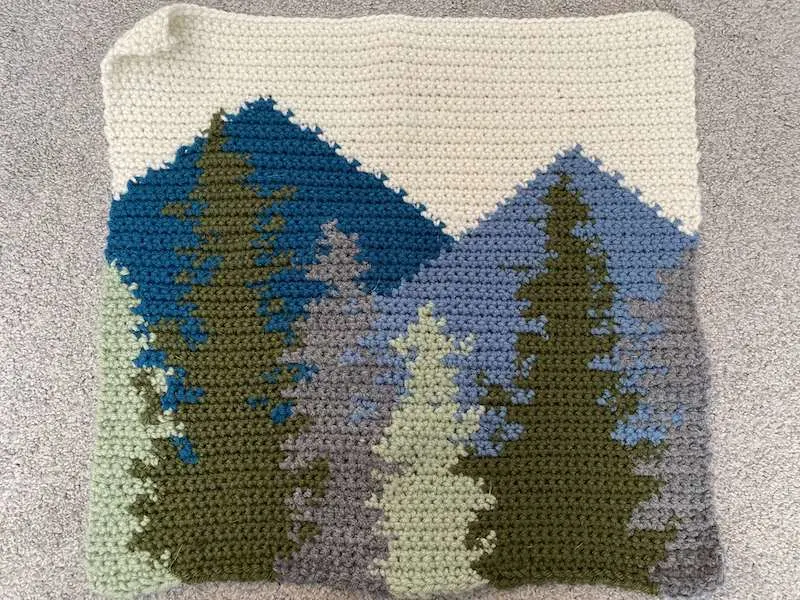
The longer I crocheted, the more and more I developed a natural affinity for it. I also fell more and more in love with it, which led me to the obsessive crocheting lifestyle I have now.
What can I say? I love crochet!
Crocheting is hard. But, if you are really committed to learning crochet, stick with it. It will get easier overtime as you practice and become more comfortable with it.
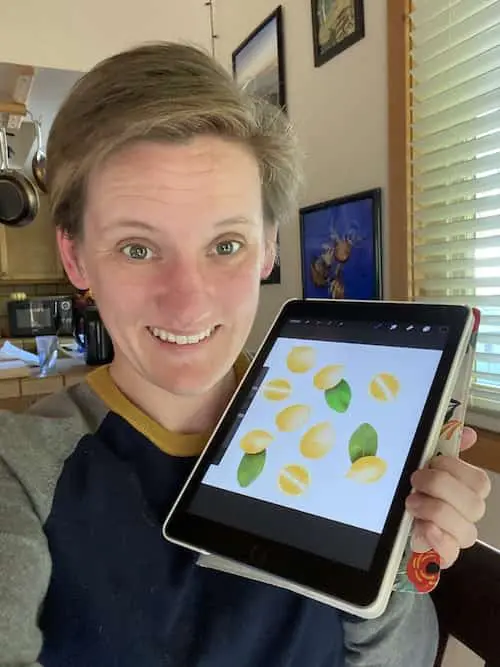
Diana has been an artist for over 27 years and has training in drawing, painting, digital drawing and graphic design. Diana’s latest obsession is digitally drawing with Procreate and Procreate Dreams. Diana has experience selling her art across a number of platforms and loves helping other artists learn how to make money from their art as well.

